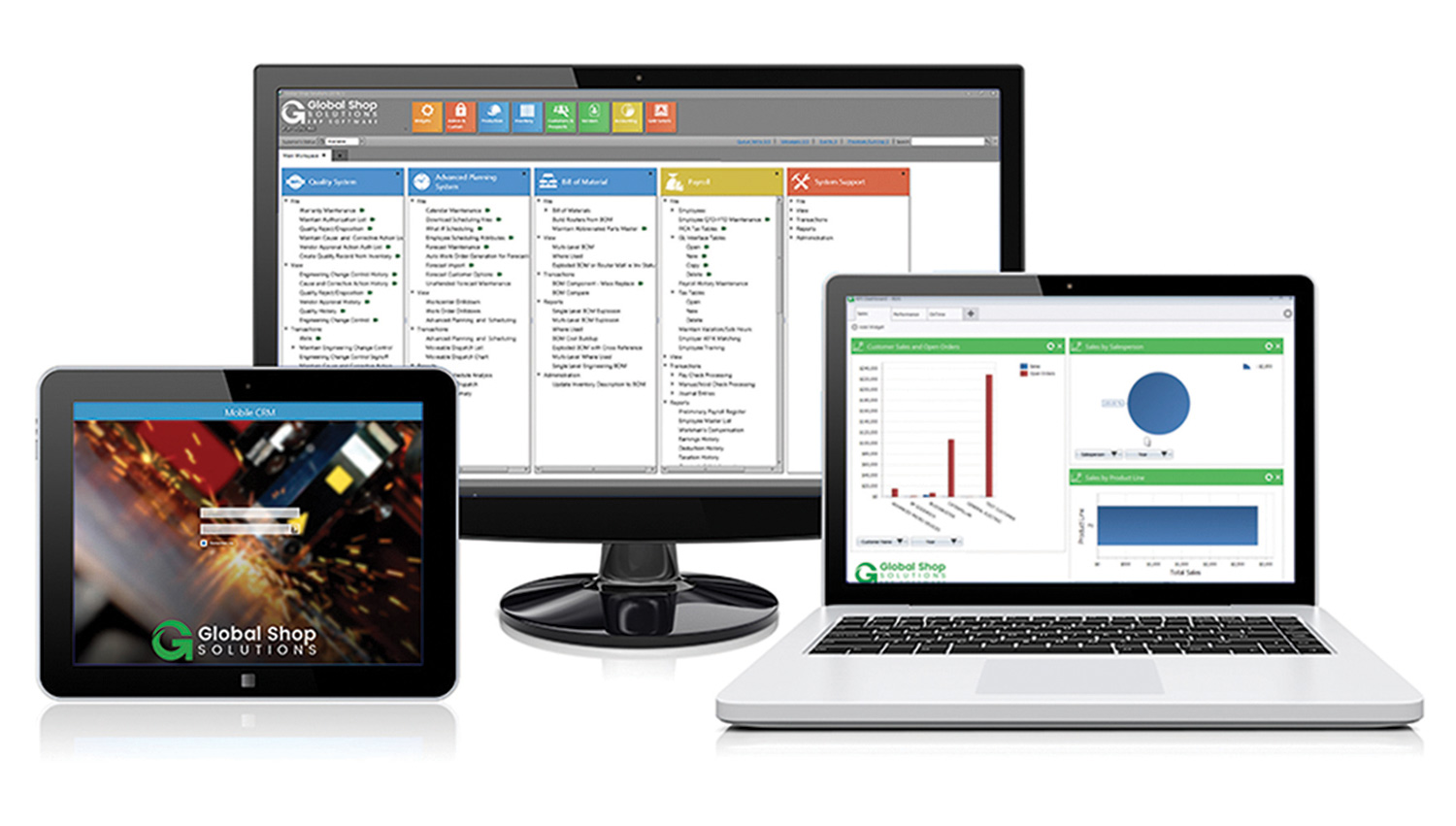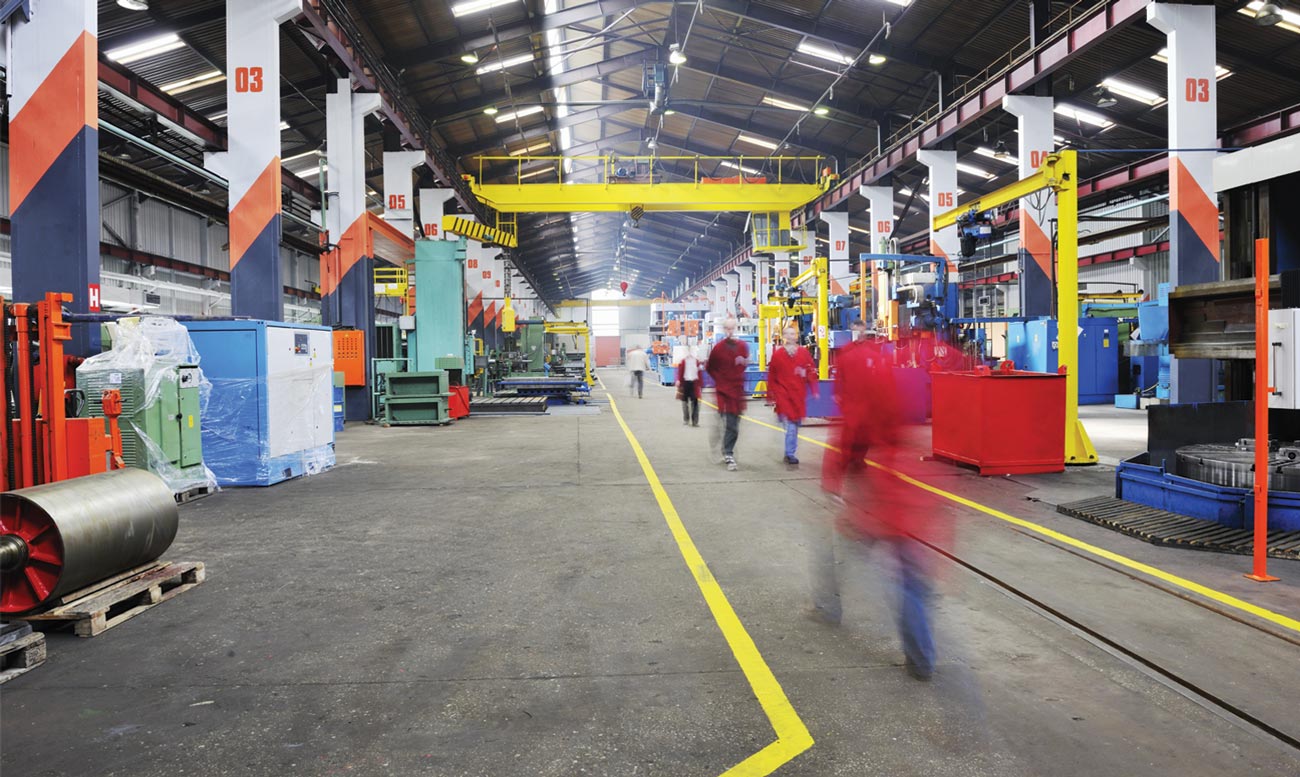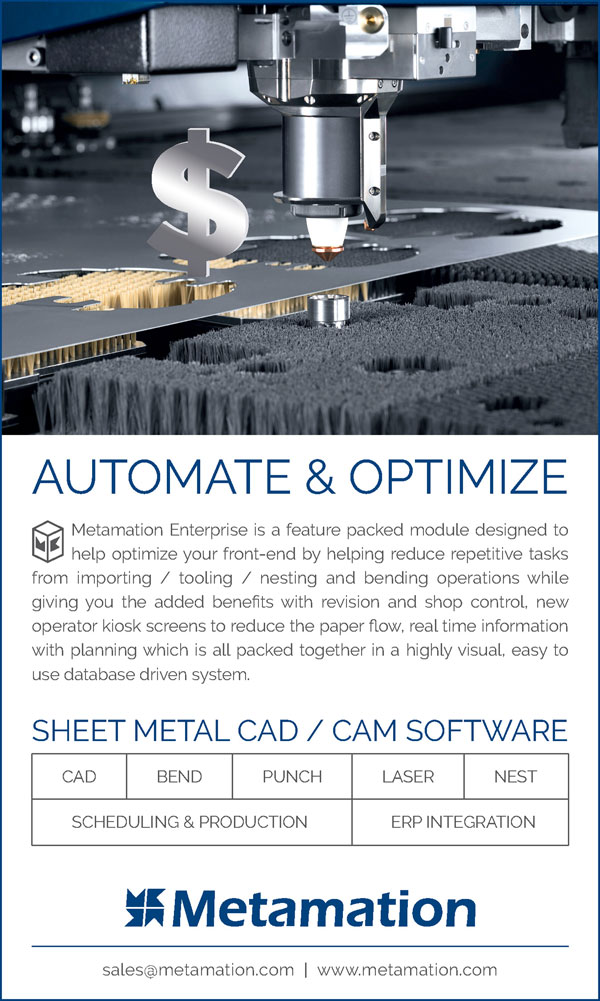Software Solutions

f someone took a photo of the health of a manufacturing business, would it look like a “before” or “after” photo? In weight-loss advertisements, the before photo typically shows a tired and woefully out of shape person. In the after photo, the person exudes the model of good health—lean, fit and full of energy. In the manufacturing industry, companies without ERP generally resemble the before photo. Transforming an inefficient manufacturing business into a lean “after” version requires the power of ERP. From quote to cash, users can manage everything from one central location in real time.

Global Shop Solutions’ ERP software simplifies manufacturing by providing real-time data visibility.
Scheduling becomes hit or miss. Rough estimations drive the scheduling process without true accounting of labor and machine capacity. Manual scheduling can take days to complete. Making changes to jobs in progress becomes a nightmare of complexity and uncertainty, resulting in missed due dates and dissatisfied customers.
Few manufacturing tasks are more important than precise job costing. Without ERP, manual time sheets often contain errors. Inaccurate inventory counts make it hard to identify true material costs, and lack of real-time data makes job costing historical rather than current. Estimating and quoting frequently miss the mark due to imprecise and unreliable data.
In a “before” ERP environment, work order and routing information often consists of tribal knowledge that resides in the heads of a few people. Jobs often start late because the work orders and routers don’t get to the shop floor on time. Large, complex work orders can take days or weeks to construct. Human error causes shop floor mistakes that lead to costly rework and missed due dates.
Manual inventory management creates a drag on virtually every aspect of production. Parts and materials get lost or misplaced. Purchasing often buys too much or too little due to imprecise inventory data. Poorly designed number structures can result in duplicate inventory. Material shortages cause jobs to start late and lead to expedited shipping costs. Inventory carrying costs go up and on-time delivery goes down, leaving unhappy customers.
 Users can instantly identify true labor and resource capacities and engage in what-if scenarios.
Users can instantly identify true labor and resource capacities and engage in what-if scenarios. 
When the finance function doesn’t reside in an ERP system, it must produce the financial reporting with a different system, which is often a slow, cumbersome and inefficient process. Lack of integration with production makes data historical rather than real-time. The numbers become out of date as soon as the next transaction occurs. Manual data entry inevitably results in human error and can take days or weeks to close the books at the end of the month.
Without ERP, quality control is a historical rather than in-the-moment process. Incorrect part numbers on work orders or routers can result in production errors. Manual scrap counts tend to be unreliable. Jobs often continue after engineers issue a stop order because some people don’t receive the notification, resulting in rework, increased job costs and dissatisfied customers.
Without ERP, customer specs, drawings, engineering documents, bills of materials (BOMs) and other job data typically require double manual entry—once by the customer and once by the manufacturer. This time-consuming process invites human error that increases labor costs and leads to mistakes on the job. The inability to integrate with CAD/CAM, nesting and other software programs increases the time and cost required to set up and complete jobs.
Users can instantly identify true labor and resource capacities as well as engage in what-if scenario planning to see how potential schedule changes will affect other jobs. Use finite and infinite scheduling to make long-term scheduling decisions so personnel always know what to be working on now and what to work on next.
ERP provides detailed cost breakdowns for inventory, jobs sequences and cost of goods sold. It tracks every cost that goes into a project including labor and parts to setup times, tool and equipment usage, indirect labor, and outside work. Estimates and quoting become more accurate. Cost overruns are easy to spot. The ability to compare actual to estimate becomes a powerful tool for identifying problems and areas for improvement.

Accurate inventory injects a new level of speed and efficiency into the entire production process. A few clicks of a mouse show how much of a part or material is available on hand, where it is, how much is already allocated to jobs, and when ordered parts will arrive. Cycle times become simple to track. Physical counts often take hours rather than days or weeks. Inventory stockouts become a thing of the past.
Fully integrated accounting modules save time and money while leaning the entire accounting function. AR and AP management take less time. The ERP system recognizes most accounting data as soon as new transactions are recorded, enabling in-the-moment financial decisions. Month-end closing of the books shrinks from weeks or days to hours.
ERP purchasing consolidates all work order and inventory data. Purchases can be automated, giving buyers time to research vendors and negotiate better deals. Buyers can forecast future purchases based on customer history. The system even identifies when new purchasing actions are required due to job changes.

ERP provides a robust array of tracking, statistical analysis and reporting tools. These tools help eliminate waste, reduce costs and get quality parts out the door on time.
Electronic data integration, nesting and other software interfaces allow the ERP system to seamlessly exchange information with third-party software programs. This eliminates the need for duplicate data entry on the receiving end and prevents double entry mistakes. CAD/CAM interfaces save hours of high-cost engineering time by directly importing CAD/CAM drawings and data in digital format. Nesting interfaces send designs directly to cutting machines to optimize material usage. Payroll interfaces automatically send hours, pay rates and other data to payroll vendors for rapid processing.
ERP simplifies manufacturing by providing real-time data visibility at every step of the production process. Knowing what will eliminate waste, reduce costs and get quality parts out the door on time is only a few mouse clicks or keystrokes away, whenever it’s needed.
MIKE MELZER serves as vice president of service and operations for Global Shop Solutions and is a 20-year veteran of manufacturing.

